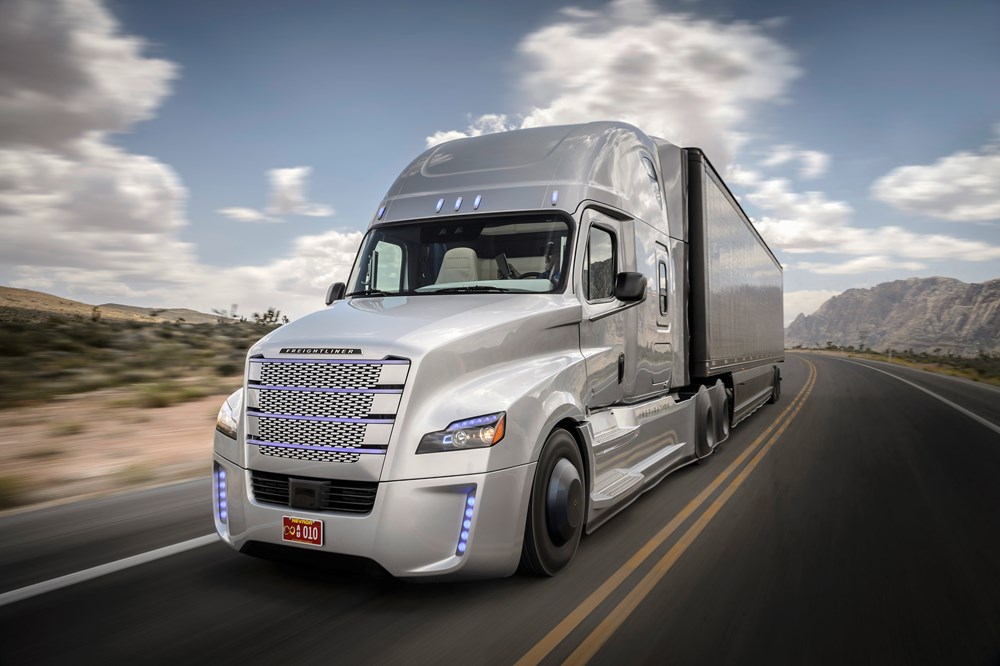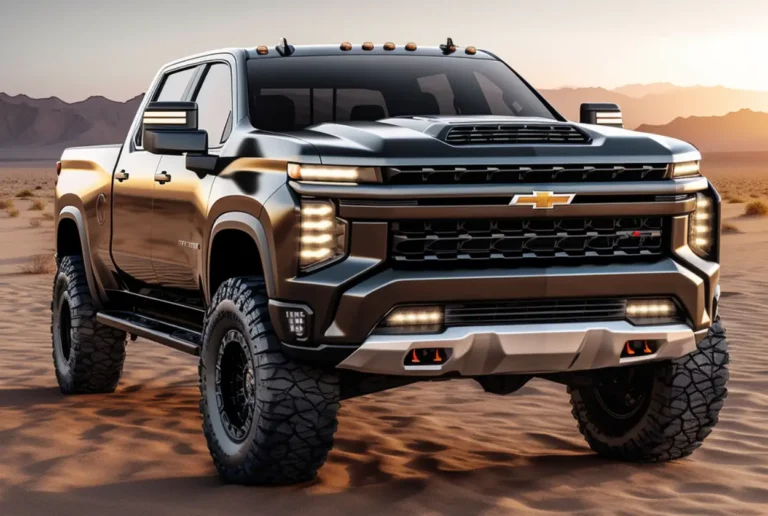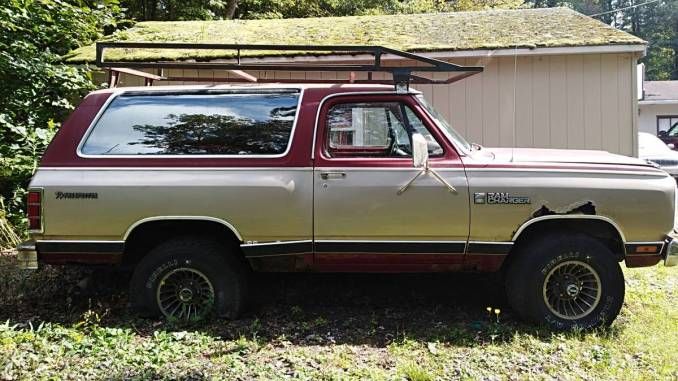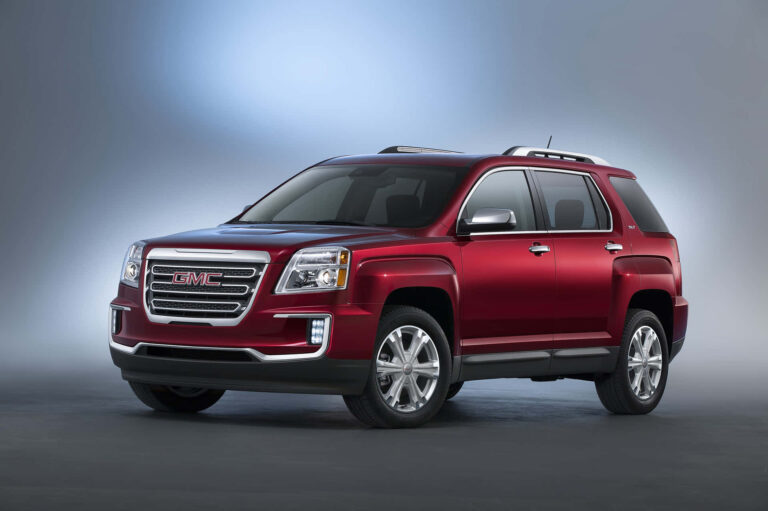Will A Truck Cap From A Toyota Tacoma Fit A Chevy Silverado?
Will A Truck Cap From A Toyota Tacoma Fit A Chevy Silverado? cars.truckstrend.com
The Quest for Compatibility: Understanding Truck Cap Fitment
The idea of repurposing accessories from one vehicle to another is often born out of necessity, a desire for cost savings, or the availability of a specific item. For truck owners, the question "Will a truck cap from a Toyota Tacoma fit a Chevy Silverado?" is a common one, driven by the sheer volume of both truck models on the road and the varying prices of new and used truck caps. While the prospect of using an existing or readily available cap might seem appealing, the reality of truck cap compatibility is far more nuanced than a simple "yes" or "no."
Will A Truck Cap From A Toyota Tacoma Fit A Chevy Silverado?
This comprehensive guide will delve into the critical factors that determine truck cap fitment, highlighting the significant differences between the Toyota Tacoma (a mid-size pickup) and the Chevy Silverado (a full-size pickup). We will explore why a direct swap is highly improbable, the potential challenges and consequences of attempting a misfit, and offer practical advice for acquiring a cap that genuinely suits your Silverado. Our aim is to provide clear, actionable insights to help you make an informed decision and avoid costly mistakes.
Understanding Truck Cap Compatibility: More Than Just Length
Truck caps, also known as camper shells or toppers, are precision-engineered accessories designed to fit specific truck bed dimensions and contours. They aren’t "one-size-fits-all" items, and for good reason. Several critical dimensions and design elements must align perfectly for a cap to function as intended, providing secure, weather-tight storage and maintaining the vehicle’s aesthetics.
The primary factors determining truck cap compatibility include:
- Bed Length: This is the most obvious dimension, but even seemingly similar lengths (e.g., a 6-foot bed on a Tacoma vs. a 6-foot bed on a Silverado) can have slight variations that prevent a perfect seal.
- Bed Width (Especially at the Rails): This is often the most significant hurdle when trying to cross-fit caps between different truck classes. The width of the bed rails, where the cap rests and clamps, must match precisely.
- Bed Rail Shape and Contour: Truck beds aren’t perfectly flat rectangles. They have unique contours, curves, and angles, particularly around the cab and tailgate, and along the top of the bed rails. A cap’s base is molded to these specific contours to create a watertight seal.
- Cab Height and Angle: The front of the truck cap is designed to align with the truck’s cab height and rake (angle). A mismatch can result in an awkward, unappealing appearance and potentially affect aerodynamics.
- Tailgate Clearance: The rear of the cap must clear the tailgate properly when opening and closing, without binding or creating large gaps.
- Mounting Points and Clamping Mechanisms: While many caps use universal clamps, the underlying structure of the bed rails must be suitable for secure attachment.

Manufacturers invest significant resources in designing caps that integrate seamlessly with specific truck models, ensuring proper fit, functionality, and aesthetic appeal.

Key Differences Between Toyota Tacoma and Chevy Silverado Beds
The fundamental reason a Tacoma truck cap will not fit a Silverado lies in the inherent class differences between the two vehicles.
Toyota Tacoma: A Mid-Size Contender
The Toyota Tacoma is a mid-size pickup truck. Its bed dimensions are generally narrower and often shorter than full-size trucks. Common bed lengths for a Tacoma include:
- Short Bed: Approximately 5 feet (60 inches)
- Long Bed: Approximately 6 feet (73.5 inches)

The bed width, especially at the rails, is considerably less than a full-size truck. The bed rail caps also have a specific profile unique to the Tacoma.
Chevy Silverado: A Full-Size Workhorse
The Chevy Silverado, depending on the generation, is a full-size pickup truck. Its beds are designed for greater hauling capacity, meaning they are significantly wider and offer more substantial lengths. Common bed lengths for a Silverado (1500 series) include:
- Short Bed: Approximately 5 feet 8 inches (69.9 inches)
- Standard Bed: Approximately 6 feet 6 inches (79.4 inches)
- Long Bed: Approximately 8 feet (98.2 inches)
Crucially, the width of a Silverado bed, from outer bed rail to outer bed rail, is substantially greater than that of a Tacoma. This width difference is the primary, insurmountable obstacle to cross-compatibility. Furthermore, the contour of the Silverado’s bed rails, its cab height, and the tailgate design are all distinct from the Tacoma.
Why a Direct Fit is Highly Unlikely
Given the significant dimensional discrepancies, a direct "plug-and-play" fit between a Toyota Tacoma truck cap and a Chevy Silverado is virtually impossible.
The most critical incompatibility is bed width. A truck cap designed for a narrower Tacoma bed simply will not span the wider bed rails of a Silverado. This would result in:
- Large Gaps: Significant spaces between the cap’s base and the Silverado’s bed rails, especially along the sides.
- No Watertight Seal: Without a proper seal, water, dust, and debris will easily enter the bed, compromising the protection of your cargo.
- Inability to Clamp Securely: The clamps would either not reach the bed rails, or if they did, the cap would be precariously perched, unstable, and prone to shifting.
- Aesthetic Mismatch: The cap would look undersized and out of place, detracting significantly from the truck’s appearance.
Even if by some remote chance the length were similar, the width and rail contour differences alone make a proper, functional, and secure fit impossible. The cab height and angle mismatch would also lead to an awkward visual transition, further highlighting the incompatibility.
Potential Challenges and Consequences of a Misfit
Attempting to force a misfit truck cap onto your Silverado can lead to a host of problems, far outweighing any perceived initial savings:
- Compromised Weather Sealing: The most immediate and critical issue. Rain, snow, and dust will infiltrate the truck bed, potentially damaging tools, luggage, or other cargo. This defeats the primary purpose of a truck cap.
- Lack of Security: Gaps and an inability to securely clamp the cap mean your cargo is easily accessible to thieves. The cap itself could also be easily lifted or removed.
- Poor Aesthetics: A cap that doesn’t fit correctly will look out of place, undersized, or disproportionate, negatively impacting the truck’s overall appearance.
- Structural Integrity Issues: An improperly supported cap can flex, stress, or even crack under normal driving conditions or due to vibrations. This can damage both the cap and the truck’s bed rails.
- Safety Hazards: A loose or improperly mounted cap could shift or detach while driving, especially at higher speeds or over rough terrain, posing a significant safety risk to yourself and others on the road.
- Reduced Resale Value: A truck with a poorly fitting or damaged cap will be less appealing to potential buyers and could significantly lower its resale value.
- Voided Warranties: Modifying a cap or truck to force a fit might void warranties on either component.
Is Modification an Option? (And Why It’s Not Recommended)
The idea of modifying a Tacoma cap to fit a Silverado might cross your mind. In theory, anything is possible with enough time, money, and expertise. However, in practice, it’s almost universally not a viable or cost-effective solution.
Modifications would likely involve:
- Widening the Cap’s Base: This is a major structural alteration. It would require cutting the cap, adding new material (fiberglass, aluminum, etc.), and then expertly re-bonding and sealing it. This is not a DIY job for most and would require specialized fabrication skills.
- Re-molding Rail Contours: Even if the width could be adjusted, the cap’s base would need to be re-molded to match the Silverado’s unique bed rail contours, which is a complex process.
- Painting and Finishing: Any modifications would require professional painting to match the cap’s original finish and ensure weather resistance.
The cost of such extensive, professional modification would almost certainly exceed the price of a new, purpose-built truck cap for your Silverado, or at the very least, a good quality used one. Furthermore, the structural integrity and weather-tightness of a heavily modified cap would always be questionable. For these reasons, attempting to modify a Tacoma cap to fit a Silverado is strongly discouraged.
Alternative Solutions for Acquiring a Truck Cap for Your Silverado
Instead of trying to force an incompatible fit, focus your efforts on finding a cap specifically designed for your Chevy Silverado. Here are the most practical and recommended approaches:
-
Buy a New, Compatible Cap:
- Pros: Perfect fit, full warranty, wide range of styles, colors, and features (windows, lighting, racks, ventilation), professional installation available.
- Cons: Highest initial cost.
- Where to Buy: Authorized dealers (e.g., Leer, ARE, Snugtop, Raider, Century), truck accessory shops.
-
Search for Used Caps Specific to Chevy Silverado:
- Pros: Significant cost savings, environmentally friendly.
- Cons: Limited selection of styles/colors, may have cosmetic wear or require minor repairs, no warranty. You’ll need to verify the exact year and bed length compatibility.
- Where to Buy:
- Online Marketplaces: Craigslist, Facebook Marketplace, eBay (filter by local pickup). Be prepared to travel.
- Local Truck Accessory Shops: Some shops sell used caps on consignment or as trade-ins.
- Salvage Yards/Auto Wreckers: Less common for caps in good condition, but worth a look.
- Truck Forums/Clubs: Enthusiast communities often have "for sale" sections.
-
Consider a Tonneau Cover:
- Pros: More affordable than most caps, easier to install/remove, good for light-duty protection and aerodynamics.
- Cons: Less secure than a hard cap, less cargo volume, not as weather-resistant as a perfectly sealed cap, cannot stand inside the bed.
- Types: Soft roll-up, hard folding, retractable.
Practical Advice and Actionable Insights
- Measure Precisely: Before buying any cap, measure your truck’s bed length from the bulkhead (front of the bed) to the inside of the closed tailgate. Also, measure the width across the bed rails at multiple points. Compare these measurements with the cap’s specifications.
- Verify Year and Model: Truck bed dimensions can change even within the same model line across different generations (e.g., a 2005 Silverado bed might be slightly different from a 2015 Silverado bed). Always confirm the exact year and sub-model (e.g., Crew Cab Short Bed) the cap was designed for.
- Inspect Used Caps Thoroughly: Check for cracks, delamination, damaged seals, broken latches, or missing hardware. Factor in potential repair costs.
- Prioritize Proper Fit: A cap that fits correctly is essential for security, weather protection, and aesthetics. Don’t compromise on fit to save a few dollars.
- Consider Installation: While some caps are DIY-friendly, professional installation ensures proper sealing and secure mounting, often coming with a warranty.
Cost Considerations for Truck Caps
It’s impossible to give an exact "price" for "Will a Tacoma cap fit a Silverado" because it’s a compatibility question, not a product. However, we can outline the cost considerations involved in different approaches to acquiring a truck cap for your Chevy Silverado.
| Option | Description | Pros | Cons | Estimated Cost Range (USD) |
|---|---|---|---|---|
| Attempting Tacoma Cap on Silverado | Trying to use a used Toyota Tacoma cap on a Chevy Silverado. | (Perceived) Free/Very Low Initial Cost if already owned. | Will NOT fit properly. Leads to leaks, security risks, poor aesthetics, potential damage, safety hazards. | $0 (Cap cost) + Infinite (Problems) |
| Buying a Used Silverado Cap | Purchasing a pre-owned truck cap specifically designed for a Chevy Silverado. | Significant cost savings over new. Can find good deals. | Limited selection, potential wear/damage, no warranty, may require minor repairs or repainting. | $300 – $1,500 |
| Buying a New Silverado Cap | Purchasing a brand-new truck cap from a reputable manufacturer. | Perfect fit, full warranty, wide range of features/colors, professional installation. | Highest initial cost. | $1,500 – $4,000+ |
| Custom Fabrication (Not Recommended) | Commissioning a custom shop to modify an existing cap or build a new one. | Potentially a "perfect" fit if done expertly. | Extremely expensive, complex, time-consuming, difficult to find qualified shops, structural integrity concerns. | $3,000 – $10,000+ |
| Tonneau Cover (Alternative) | A cover for the truck bed, not a full cap. | More affordable, easier installation/removal, lighter weight. | Less secure than a hard cap, less cargo volume, not as weather-tight, no stand-up room. | $200 – $1,500 |
Note: Prices are estimates and can vary widely based on brand, features, material, condition (used), location, and installation costs.
Frequently Asked Questions (FAQ)
Q1: Can I make minor adjustments to fit a Tacoma cap on a Silverado?
A1: No. The dimensional differences, especially in width and bed rail contour, are too significant for minor adjustments. Any attempt would compromise the cap’s integrity, weather sealing, and security.
Q2: What are the biggest compatibility issues between Tacoma and Silverado caps?
A2: The primary issues are bed width (Silverado beds are significantly wider), bed rail contour (the shape where the cap rests), and cab height/angle.
Q3: Is it ever worth trying to modify a cap from one truck model to fit another?
A3: Generally, no. The cost, complexity, and expertise required for structural modifications often exceed the cost of buying a compatible used or even new cap. Furthermore, the modified cap’s integrity and weather resistance would be compromised.
Q4: Where can I find used truck caps specifically for my Chevy Silverado?
A4: Check online marketplaces like Craigslist, Facebook Marketplace, and eBay (filtering for local pickup). Also, inquire at local truck accessory shops, salvage yards, or specific Chevy truck owner forums and clubs.
Q5: What key measurements should I take before buying a used truck cap for my Silverado?
A5: You need the exact bed length (from bulkhead to inside of closed tailgate), and the width across the top of the bed rails (from outside edge to outside edge). Also, note your truck’s cab height relative to the bed rails.
Q6: What happens if a truck cap doesn’t seal properly to the bed?
A6: If the cap doesn’t seal properly, water, dust, and debris will enter the truck bed, potentially damaging your cargo. It also compromises the security, making it easier for someone to access your belongings.
Conclusion
The definitive answer to "Will a truck cap from a Toyota Tacoma fit a Chevy Silverado?" is a resounding no for a proper, functional, and safe fit. The fundamental differences in truck class, particularly bed width and rail contours, make a direct swap impossible. Attempting to force a misfit cap will lead to numerous problems, including compromised weather sealing, security risks, poor aesthetics, and potential damage to both the cap and your truck.
While the desire to save money or utilize an available cap is understandable, the long-term benefits of investing in a cap specifically designed for your Chevy Silverado far outweigh the fleeting appeal of a cheap, incompatible option. Prioritize proper fitment for the safety of your cargo, the integrity of your truck, and your peace of mind. Your Silverado deserves a cap that complements its design and enhances its utility, not one that struggles to fit.






